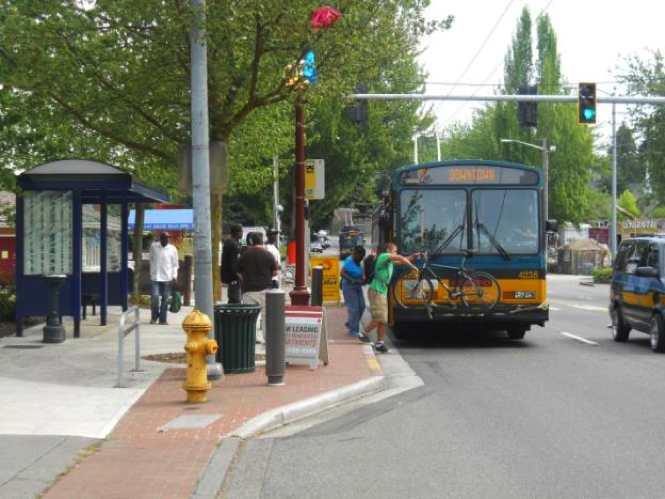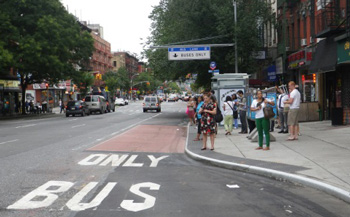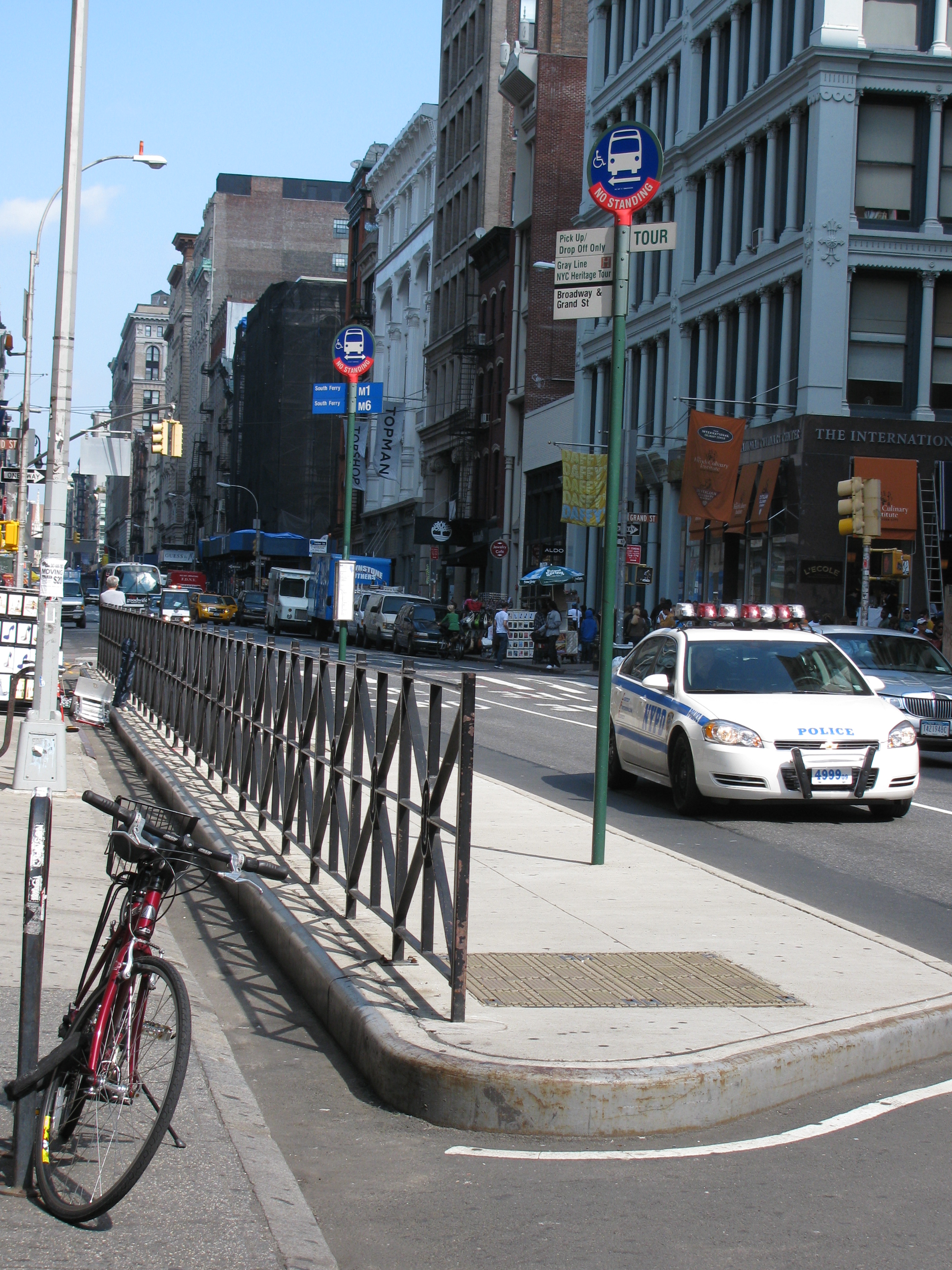Bus bulb
The Haltestellenkap is a stop for public transport, the edge of which is preferred to the continuous lanes of road traffic or on the road area by tram. Often it is caused by the conversion of bus bays and symbolized in some cases the priority of public transport.
The advantages of a bus capes counts its short length and the ability to close to the curb ( such as the Kassel Kerb ) to stop in order to facilitate the exchange of passengers. Furthermore, the setting up of shelters is especially in narrow roads often only possible if the footpath is widened by bus capes; In addition, a Haltestellenkap not be overpopulated by car. The holding vehicle also facilitates the crossing of the road for boarding and alighting. It makes sense, therefore, the combination of Haltestellenkap and crossing system. Furthermore, the bus or the tram is leaving the station at the top of the vehicle flow and it does not have to wait for a gap in the traffic flow at exit, this will speed up public transport. From a cape also results in a certain traffic calming, as the holding bus / tram slows down the flow of traffic shortly. Finally, the bus bays diagonal travel is avoided on arrival and departure, which increases the security for standing or aus-/einsteigende passengers.
It has over other stops designs ( such as the bus bay ) has the disadvantage that, especially with several bus capes consecutively the rest of the traffic flow is disturbed. Therefore, the application limits should be at a relevant traffic volume of 1500 vehicles / h and a vehicle clock of about ten minutes.
Bus capes are not suitable when vehicles have to wait a long time, such as at connection points or termini.
Norms and Standards
- Recommendations for systems of public transport ( EAÖ )
- Guidelines for the investment of city streets ( RASt )









